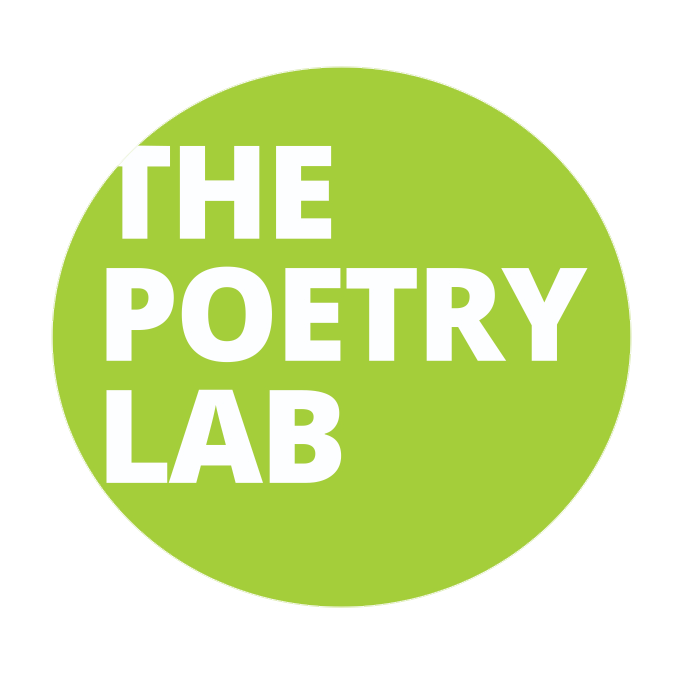5 Prose Poems That Think Inside The Box
Let’s talk about prose poetry: the old-new and oft-perplexing form that leverages aspects of prose. Prose poetry is a hot topic at The Poetry Lab, with many of us exploring its ins and outs by taking one of the Lab’s Brick Box Paradox classes (starting again this September). But I’ll admit, I was unsure about prose poetry at first. It felt like mislabeling at best (aren’t you just writing flash prose?) and flagrantly abandoning one of poetry’s great advantages—the line break—at worst.
I’ve always loved breaking a line. I consider it one of the best tools I have in my poet-arsenal. After all, a well-executed line break can create tension, provide emphasis, and even create double meanings within the text. Even when I was a new writer, breaking my lines based on whimsy rather than rhythm or craft—I still felt strongly about them. I’ve always been a die-hard fan.
If prose poems are poltergeists, I was Scully the skeptic. How can the removal of line breaks elevate poetry rather than lessen it?
The prose poem paradox
Prose is ubiquitous. Default. So much so, most people don’t even think of everyday writing in meetings or emails as “prose”. And yet from your student loan promissory note to the love letter from your ex, you’re looking at a familiar (if at times unsettling) form of blocky text.
However, prose’s commonness is also one of its superpowers. Due to its familiarity, the paragraph form fundamentally changes the context and feeling of walking into a poem. It feels grounding—it’s what we’re most used to, after all—while luring us into a deeper context of the poem.
Prose poems conceal what’s going on inside them until you, the reader, step into that box.
By learning in community, reading hundreds of prose poems, and trying my hand at writing my own prose poems, I’ve come to understand the paradox: some poems do operate most effectively as prose poems, cultivating poignant associations and emotions through the set limitations of the form.
Read on for examples of prose poems that work brilliantly inside a box.
Five prose poems that think inside the box
1) “Empire Strikes” by Kenji C. Liu
Kenji C. Liu’s invented form, the “frankenpo”, combines different source texts in a Frankenstein-inspired move to create new life from existing prose. Liu describes the frankenpo in the journal ANMLY as creating “a new poetic text by collecting, disaggregating, randomizing, rearranging, recombining, erasing, and reanimating one or more chosen bodies of text, for the purpose of divining or revealing new meanings often at odds with the original texts”. In this way, the form is reminiscent of other “found” poetry forms like the cento or cut-out.
In “Empire Strikes”, Liu combines Emperor Palpatine’s speech to the Galactic Senate in Star Wars Ep 3: Revenge of the Sith, POTUS 45’s inaugural speech, and dialogue from Star Wars Eps 4-6. As I read the poem, these texts weave together until I’m not sure which lines could have stemmed from which source, and I begin to take in the words as an art-piece (rather than a poetic narrative) focused on power and imperialism. With apt source text selections and artful strategies of blending them, the tone comes through crystal clear even though the speaker is an amalgamation.
Liu has written many surreal prose frankenpo’s, notably in his second collection of poems, Monsters I Have Been. While it may seem counterintuitive to make this creation in the confines of a box, prose is the default written mode for a speech, driving home the context. Plus, in holding these distinct fragments tightly together, they are more inextricably weaved and taken in as a unified speaker. Like this poem, speakers contain worlds of influence in their singular voice; this poem uniquely allows its prose form to align with its content.
2) “Hysteria” by Kim Yideum
As you may have intuited reading Liu’s poem above, prose poetry and surrealism go together like peanut butter and jelly. “Hysteria” by Kim Yideum exemplifies prose’s ability to take us to another world while also staying squarely within the speaker’s sporadic thoughts and rhetorical questions to the ether.
Yideum doesn’t pull any punches: “I want to rip you apart with my teeth”, the speaker begins, directly addressing a “you” on the “speeding subway”. The title, menstruation, and period references add another layer to my reading by bringing in the concept of hysteria as a longstanding label given to women who don’t conform.
The prose form does multiple jobs here. First, the shape feels referential to the physical setting of the piece. It engenders a feeling of containment and tightness as we empathize with the speaker’s discomfort of being trapped in close quarters with a stranger. At the same time, the lack of end-stopped lines feels referential to the stream-of-consciousness-esque flow of bleeding. Lastly, the pace moves quickly thanks to the prose style, conceptually supporting the idea of wildness or hysteria.
3) “Essay on Thunder” by Sumita Chakraborty
Framed in the title as an “essay”, this prose poem by Sumita Chakraborty plays on the idea of a scholarly or argumentative text. The speaker starts out by citing someone named Stendahl on “soul-shaking upheaval”. The tone is academic throughout.
Though the title says the subject is “thunder”, thunder is referencing “thunderbolt”, which relates (in the world of this poem) to the idea of “love at first sight”. The first paragraph draws out connections between these ideas, and the second paragraph brings us closer to the speaker, who describes themselves copying down “these sentences from Stendahl”—and then in a gynecology exam room, staring at a painting on the ceiling.
Naturally, prose makes for an intuitive form for playing with the concept of an essay. While we feel grounded in the speaker’s train of thought, they lead us somewhere rather unexpected in the actual subjects of the piece, including love (“curse of passionate love”, “arousal”, “love at first sight”) and conflict (“misfortune”, “soul-shaking”, “battle”, “war”). When we land in this final space of hummingbird tongues, the sudden turn is all the more surprising because prose was the vehicle we took to arrive here.
4) “My Grandmother's White Cat” by Maurice Kilwein Guevara
The poem “My Grandmother’s White Cat” by Maurice Kilwein Guevara is hard to imagine as anything but a prose poem. The writing leans heavily into a novelistic style (there are several indented paragraphs), and it almost reads like a “short short” or piece of flash fiction. The narrative is chronological and grounded contextually. Even the syntax is straight-forward in motion.
While this is one of the most prosaic poems in this article, the poetic elements are central to the piece: its sparseness, for example, draws the reader towards the sensory experiences described (the flies the speaker traps in mid-air, the smell of the cat, the creamy flower his father chews), and the diction tells us about the mood of the poem, with the setting described not just as “dark”, but “skunk-dark”. Tomatoes aren’t described as growing but rather they’re “bandaged” to poles. Craftily blending aspects of prose and poetry, this piece creates a heavy feeling in the reader, and aging and death are centralized from beginning to end.
5) “Children are the Orgasm of the World” by Hera Lindsay Bird
When I reach the end of “Children are the Orgasm of the World” by Hera Lindsay Bird, I feel like I’ve been on a capital “J” Journey. At the start of the poem, we’re introduced to our speaker in a stream-of-consciousness tone as she describes reading the words “children are the orgasm of the world” on someone’s bag while riding the bus. In the beginning, the poem feels like observational comedy, as the speaker riffs on the concept of screen-printed inspirational sayings:
“What’s kinder than the glittered baseball cap of a stranger telling you what to strive for? It’s like living in a world of endless therapists."
This riffing becomes more and more abstract and eventually opens into the existential, as the “you” of the poem ends up “naked on some distant and rocky outcrop, looking up at the sunset from a world so new looking up hasn’t even been invented yet.” With these final lines, we find ourselves somewhere very different from where we started on the bus.
As with “Hysteria” this poem employs a stream-of-consciousness mode (and as observant readers may have noticed, both take place on public transportation—where minds are apt to wander!) These poems both demonstrate how stream-of-conscious and the prose mode work well together. It’s as if we’re inside the speaker’s mind. Why would the rhythm of line breaks exist in (what’s presented as) spur-of-the-moment thought? Again, the use of prose serves to support the explorative work of the poem and guides us toward certain readings of the piece.
➡️Read “Children are the Orgasm of the World”
FINAL THOUGHTS
Whether you want to create poetic effects related to stream-of-consciousness, traditional storytelling, or the integration (or imitation) of real-world texts, prose poetry may be a useful form to try. Line breaks are still one of my favorite parts of writing poetry. But there’s magic in prose poetry, too—it’s all about harmonizing the medium and message.
More prose poems to explore:
This article was published on August 9, 2023. Written by:


